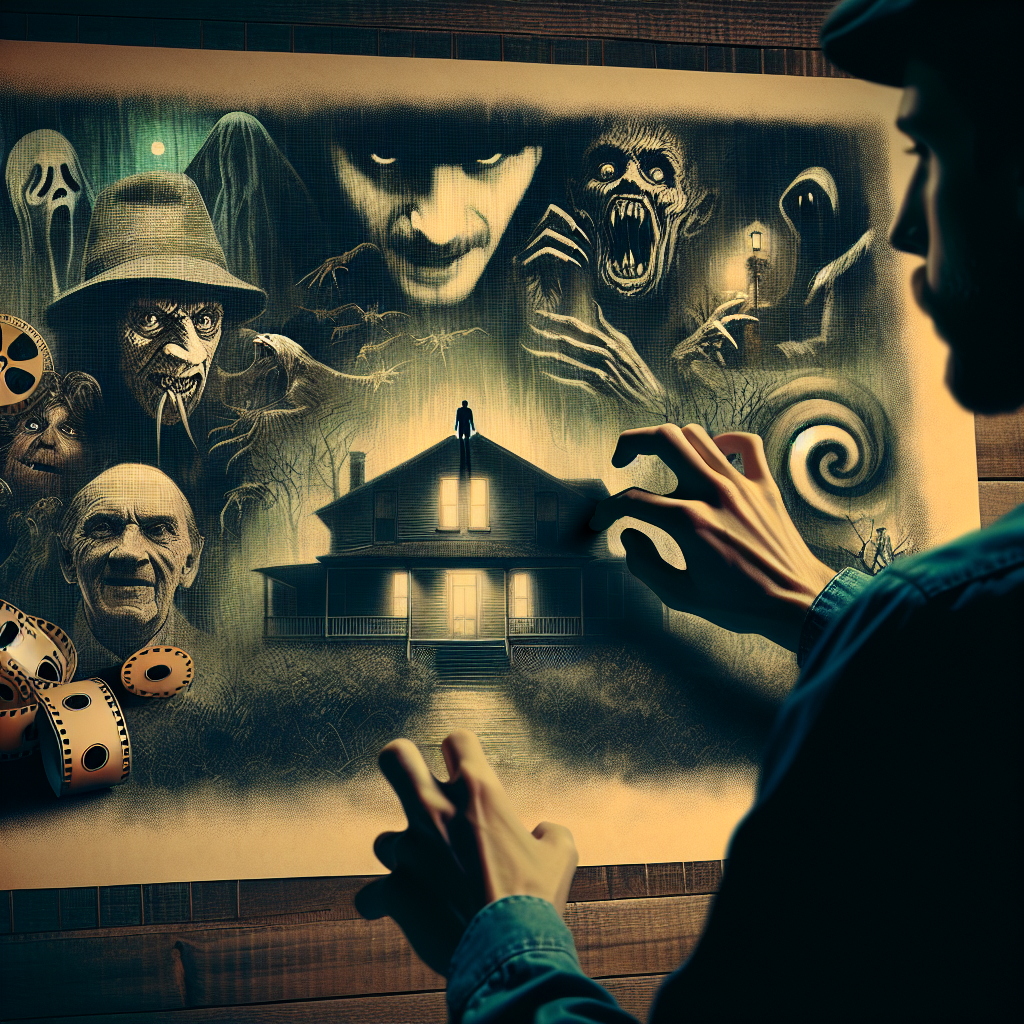"10 Chilling Reasons to Watch Rosemary’s Baby (1968) – A Horrific Masterpiece"
Introduction:
Roman Polanski’s "Rosemary’s Baby" (1968) is widely lauded as a pinnacle of horror cinema, a film that deftly merges psychological terror with supernatural elements to create a chilling masterpiece. This movie not only invigorated the horror genre but also cemented its place in the annals of cinema history. Starring Mia Farrow, John Cassavetes, and Ruth Gordon, "Rosemary’s Baby" is an adaptation of Ira Levin’s 1967 novel of the same name, and it tells the harrowing tale of Rosemary Woodhouse, a young woman who becomes increasingly convinced that her unborn child is the target of a sinister conspiracy.
Significance in Cinema History:
Upon its release, "Rosemary’s Baby" received critical acclaim and was a commercial success. It is heralded for its innovative approach to horror, moving away from the schlock and gore that characterized many horror films of the era, instead opting for a psychological and slow-burn approach. This shift influenced a generation of filmmakers and led to a slew of horror films that emphasize atmosphere and psychological dread over explicit violence.
Main Themes:
-
Paranoia and Isolation:
The overarching theme of the film is paranoia. Rosemary (Mia Farrow) finds herself isolated in her own home, surrounded by neighbors who may have nefarious intentions. The contrast between the ordinary setting of a Manhattan apartment and the extraordinary events that unfold heightens the psychological tension. This theme of isolation is pertinent to many viewers who can relate to feelings of distrust and dislocation. -
Control and Autonomy:
Rosemary’s autonomy over her own body is consistently undermined by those around her, particularly her husband, Guy (John Cassavetes), and the eerie Castevet couple next door (played brilliantly by Ruth Gordon and Sidney Blackmer). The film explores the terrifying loss of control that Rosemary experiences, reflecting broader societal anxieties about women’s bodily autonomy. - The Occult and Satanism:
The film taps into fears of the occult and Satanism, prevalent in the 1960s due to various cultural and social movements. The polite and seemingly benign elderly neighbors are revealed to be part of a Satanic coven, which juxtaposes the familiar with the horrifying unknown.
Character Arcs:
-
Rosemary Woodhouse:
Mia Farrow’s portrayal of Rosemary is a study in vulnerability and strength. Her transformation from a hopeful, innocent wife to a terrified, determined mother is both tragic and heroic. Farrow’s performance is central to the film’s emotional impact, capturing the audience’s empathy and fear. -
Guy Woodhouse:
John Cassavetes plays Guy with a blend of charm and sleaziness, a man whose ambition overpowers his morality. His betrayal of Rosemary for his own gain is a critical aspect of the plot, representing the insidious nature of close relationships turned toxic. - Minnie and Roman Castevet:
Ruth Gordon’s Oscar-winning performance as Minnie Castevet adds a chilling layer to the film. She and her husband Roman (Sidney Blackmer) play the roles of seemingly friendly but ultimately sinister neighbors. Their outward friendliness masks a deep-seated malevolence, adding to the unsettling atmosphere.
Cinematic Techniques:
-
Use of Space and Setting:
The confined setting of the Bramford apartment building creates a claustrophobic atmosphere. Polanski’s choice of long takes and close-ups immerses the audience in Rosie’s perspective, making her paranoia palpable. -
Sound Design and Score:
Krzysztof Komeda’s haunting score, with its lullaby-like theme, contrasts sharply with the terror underlying the story. Sound design plays a crucial role in building tension; mundane sounds take on menacing qualities, contributing to the atmosphere of dread. - Pacing and Editing:
The film’s pacing is deliberate, slowly escalating the tension as Rosemary’s situation becomes increasingly dire. This slow build-up allows for character development and deepens the psychological horror, avoiding the pitfall of cheap jump scares.
Cultural, Social, and Historical Context:
"Rosemary’s Baby" was released during a time of cultural upheaval in the 1960s, reflecting and contributing to the era’s anxieties. The film came out just as the Women’s Liberation Movement was gaining momentum, and its portrayal of a woman’s struggle for control over her own body resonated deeply. Furthermore, the film predates and arguably foreshadows real-life events like the Manson Family murders, which added an even more chilling layer to its legacy. It captures the essence of the time: a period when traditional social structures were being questioned and redefined.
Legacy and Lasting Influence:
The impact of "Rosemary’s Baby" on the horror genre and popular culture cannot be overstated. It paved the way for horror films that prioritize psychological depth and atmosphere, influencing movies such as "The Exorcist" (1973), "Don’t Look Now" (1973), and more recently, "Hereditary" (2018). The film’s themes of paranoia, loss of control, and the perversion of the familiar continue to resonate, making it a timeless piece of cinema.
Reflective Questions and Takeaways:
- How does "Rosemary’s Baby" compare to modern horror films in terms of its use of psychological over explicit horror?
- In what ways does the film’s portrayal of female autonomy remain relevant today?
- What can contemporary filmmakers learn from Polanski’s use of space, sound, and character development in creating suspense?
As we reflect on Roman Polanski’s gripping masterpiece, we are reminded of the power of cinema to evoke deep-seated fears and provoke thought. "Rosemary’s Baby" continues to be a touchstone in horror, inviting audiences to explore the darkest corners of human experience and societal anxieties. Its relevance today is a testament to its masterful storytelling and enduring themes — a true horror classic that transcends time.
Got more questions? Our personalized Movies Explorer AI assistant is here to help. Click here to start a conversation!
[Advertisement]
Looking for deeper meaning in your favorite movies? Discover how ANY movie relates to positive biblical principles with Movies and Scripture GPT from BGodInspired.com. Click here to explore insights you might not have realized! . Simply key in any movie and let it show you insights you might not have realized otherwise!
[Advertisement]

